Superfamily †Mosasauroidea Tribe †Globidensini Rank Genus | Class Reptilia Family †Mosasauridae Phylum Chordata Order Scaled reptiles | |
 | ||
Similar | ||
Dba platecarpus vs globidens
Globidens ("Globe teeth") is an extinct genus of mosasaur lizard.
Contents
- Dba platecarpus vs globidens
- New globidens stk
- Description
- History of discovery
- Species
- Reassigned species
- Classification
- Paleobiology
- Paleoecology
- References
Globidens alabamaensis was the first species of Globidens described, in a publication by Charles W. Gilmore (1912). It is used as the type specimen for Globidens.
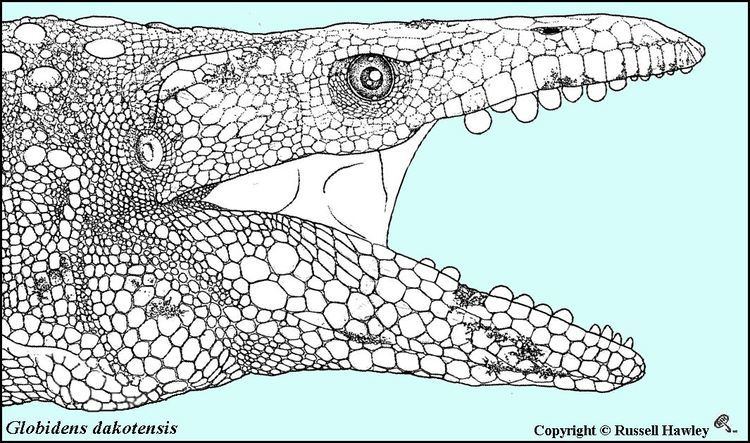
Globidens belongs to the family Mosasauridae, which consists of several genera of predatory marine reptiles prevalent during the Late Cretaceous. Specimens of Globidens have been discovered in North America and parts of Africa and Asia (Indonesia). Among mosasaurs, Globidens is probably most well known for its highly rounded, globe-like teeth.

New globidens stk
Description
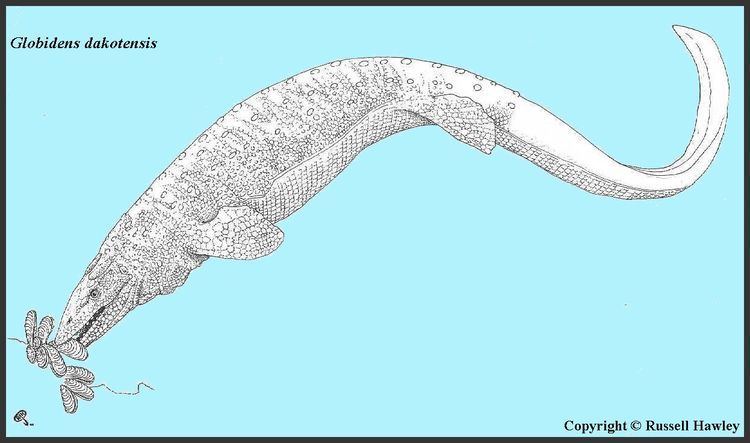
Globidens was ~6 m (20 ft) in length and in appearance very much like other mosasaurs (streamlined body with flippers, a laterally flattened tail and powerful jaws). The teeth of Globidens differed from those of other mosasaurs in being globular, giving rise to its generic name. Generally, most mosasaurs had sharp teeth evolved to grab soft, slippery prey like fish and squid, which in some later species were modified to rend flesh, as well. While many other mosasaurs were capable of crushing the shells of ammonites, none were as specialized for dealing with armored prey as Globidens. Globidens had semispherical teeth with rounded nubbin-like points, which were much better suited for crushing tough armored prey like small turtles, ammonites, nautili, and bivalves. Like its larger relative, Mosasaurus, Globidens had a robustly built skull with tightly-articulating jaws. Such features no doubt played a large role in its ability to penetrate the armor of its shelled prey.

Gilmore's initial assessment of Globidens, based on an incomplete specimen of G. alabamaensis, made note of characteristics observable in parts of the skull, the teeth, and one of the cervical vertebrae. He made note of a long snout with a large maxilla; a large, sturdy frontal bone; and the characteristic globular teeth with finely wrinkled enamel. Gilmore concluded that the skull characters were similar to Platecarpus or, more closely, to Brachysaurus (currently Prognathodon).
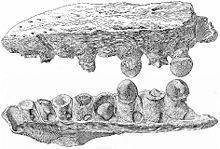
Studies since Gilmore's assessment establish more specific and more complete lists of diagnostic features. Gilmore correctly inferred that Globidens had a stout, powerfully built skull. In addition, a few notable skull characteristics include: a small parietal foramen, located entirely within the parietal; tuberosities present on the jugal; a longitudinal crest present on the dorsal surface of the frontal; and a premaxilla with a rostrum anterior to the premaxillary teeth. The rounded teeth with finely wrinkled enamel seen in Globidens are characteristic of Globidensini; however, the degree of rounding on individual teeth may be indicative of genus or even species. Marginal teeth in Globidens become most subspherical toward the center of the jaws. Additionally, Globidens had thirteen maxillary teeth, and either lacked or showed only rudimentary pterygoid dentition.
History of discovery
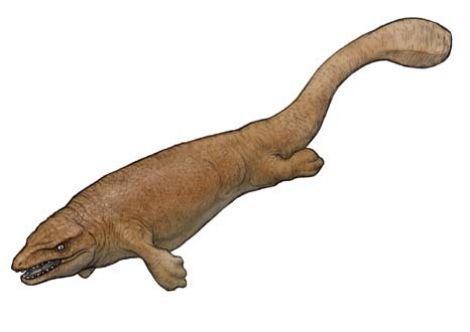
Globidens was first described in 1912 by Charles W. Gilmore. Using an incomplete specimen consisting only of a partial skull with several teeth, a single cervical vertebra, and numerous fragments, Gilmore identified Globidens as a new genus, naming his type specimen Globidens alabamaensis. The genus name was based on the globular structure of the specimen's teeth, and the species name on the location in which it was discovered. (It may be noted that the original location from which the specimen was taken is not precisely known, as Gilmore was examining a specimen that had been collected earlier.) (Gilmore 1912)
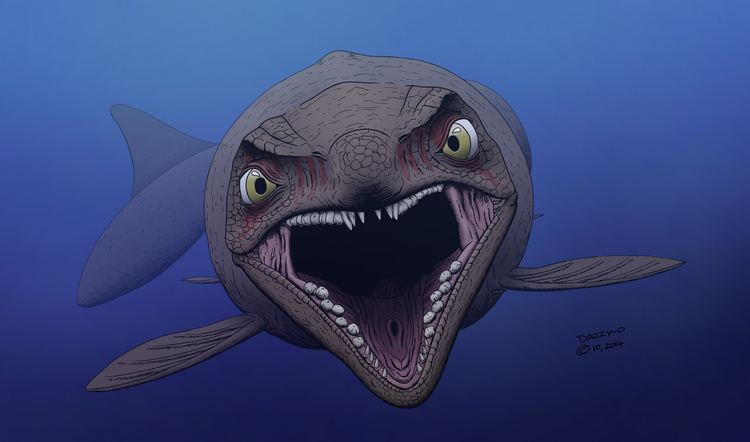
Since Gilmore's identification of Globidens, several other species have been identified, including G. dakotensis (Russel 1975), which currently is sometimes used as a secondary type specimen alongside G. alabamaensis. Some specimens previously thought to be new species of Globidens have since been reassigned to other taxa such as Prognathodon, or placed in a new taxa, such as G. aegypticus which is now a type specimen for Igdamanosaurus.
Species
Further study or additional specimens may be necessary for the following:
Reassigned species
Classification
Globidens resides within the Subfamily Mosasaurinae, which includes several mosasaur lineages, and within that, the Tribe Globidensini, which also includes the genus Carinodens. Carinodens is thus regarded as a sister taxon of Globidens.
Placement of Globidens and, to an extent, Mosasauridae in a phylogenetic tree is somewhat unclear, and specific placement of genera varies between many morphological and molecular tests. It is generally agreed that Mosasauridae is a sister group to Pythonomorpha, which includes all snakes. Within Mosasauridae, Globidens is generally placed near Prognathodon, although some placements of Prognathodon specimens are questionable.
Cladogram of mosasaurs and related taxa modified from Aaron R. H. Leblanc, Michael W. Caldwell and Nathalie Bardet, 2012:
Paleobiology
Globidens was somewhat uniquely adapted to take advantage of hard-shelled food resources, in comparison to other mosasaurs. In addition to a generally robust skull, its teeth are designed for crushing, rather than piercing or tearing. Therefore, it is believed that Globidens was a durophagous predator, eating mollusks such as bivalves and ammonites. Stomach contents of a specimen found in South Dakota support prior assumptions, showing the crushed shells of inoceramid clams.
Paleoecology
Globidens, like other mosasaurs, lived in warm, shallow seas such as the Western Interior Seaway in North America. So far, Globidens has been discovered primarily in North America and in parts of northern and western Africa, such as Morocco and Angola, although specimens from the Middle East and eastern South America have been found as well. In Indonesia, Globidens lived in Timor island
